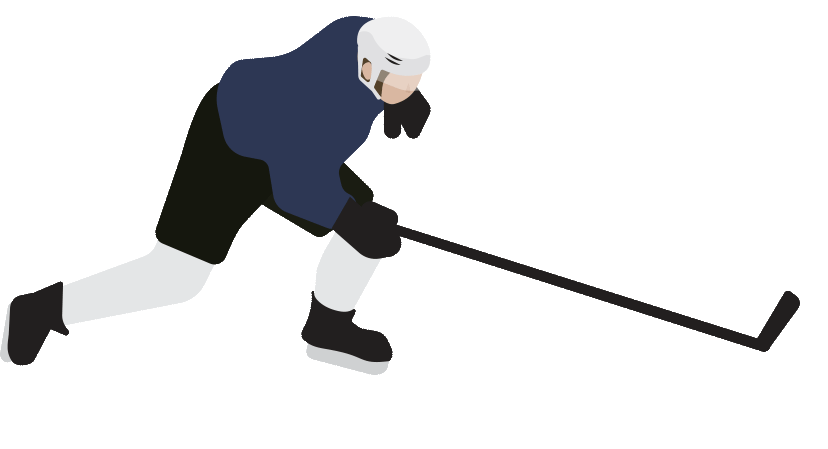
All things considered, obviously, you likely realize that you need a stick, yet it’s not as straightforward as purchasing any old stick. They come in all shapes and sizes and it very well may be somewhat of a minefield for the tenderfoot.
In the event that you are an amateur and are attempting to sort out what one to get, we’ve created a convenient manual to help you comprehend what will suit you best. You also need the best sets of elbow pads.
Just as a stick you need to wear shin cushions. In addition to the fact that they are fundamental, they are mandatory. Hockey shin cushions not just offer insurance for most of your lower leg yet they additionally reach out down along the edges to cover your lower legs; and trust me that is a gift since you would prefer not to get this show on the road hockey ball on the lower leg.
What professional wears?
You additionally may have seen players wearing mouth watches. These are suggested however not mandatory, except if you’re under 18. In any case, in the event that you were sufficiently unfortunate to get hit in the mouth by a stick or ball, they could spare you some genuine time and cash at the dental specialist.
To the extent gear goes, that is it. Nothing else; well, at any rate during most of the game. There is other hardware permitted during the game, yet just in case of a punishment corner (what’s a punishment corner, I hear you state – I’ll clarify that somewhat later) During a punishment corner, the protectors are permitted to wear defensive face covers, as the ball can fly high towards the objective. By and by these are just obligatory for under 18s yet enthusiastically suggested.
The main player permitted to wear security during a game is the goalkeeper. They’re sufficiently fortunate to have the option to wear cushioning all over just as a head protector, however that is just normal, as they go through the entire game with balls flying towards them at extraordinary speed.
At the point when you’re new to the game you may battle with a portion of the phrasing utilized. I’ll cover a couple here to kick you off yet I would suggest observing a few matches on YouTube, especially the FIH channel. You’ll be shocked by the amount you get.
Start of the play
This is your specialty toward the start of play, the same as commencement in football. Thus, when you hear that, it just implies that is the thing that time the game beginnings. Furthermore, wording from that would be, “Whose pushback is it”, “it’s your pushback” and so forth
Now and again alluded to as a short corner, this is a preferred position to the assaulting group where the safeguarding group is permitted only four protectors and the goalkeeper on the objective line all other colleagues must go past the midway line.
The assaulting group must be outside the D and the ball is played in by the assaulting group from the punishment corner mark. The ball must go across and afterward outside the D before a shot can be taken. Just when the ball is played in from the punishment corner imprint can the guarding group fall off the line.
The umpire will flag a punishment corner by broadening the two arms straight before them pointing towards the objective.
Free hit
This is a free hit for the shielding group after the ball is played over the backline by an aggressor. It’s known as a sixteen since it is brought the line level with the head of the D (16 yards) and is set in accordance with where the ball went over the backline.
The umpire signal for this is the two arms straight out to the sides in a cross shape.
The smart play
It’s a smart thought to pay heed to the signs the umpire makes as it assists with knowing why the whistle was blown.
like a free kick in football. These are granted for an encroachment against the group that made the encroachment.
All players not enduring the free shot must be at any rate 5 yards from the ball or the umpire can grant another hit and may even give an individual punishment to a player (show them a card). On the off chance that the free hit is granted inside the assaulting 25-yard line, at that point, the ball must travel 5 yards before entering the D.
The umpire flags this by expanding one arm toward the path that the assaulting group are playing.


